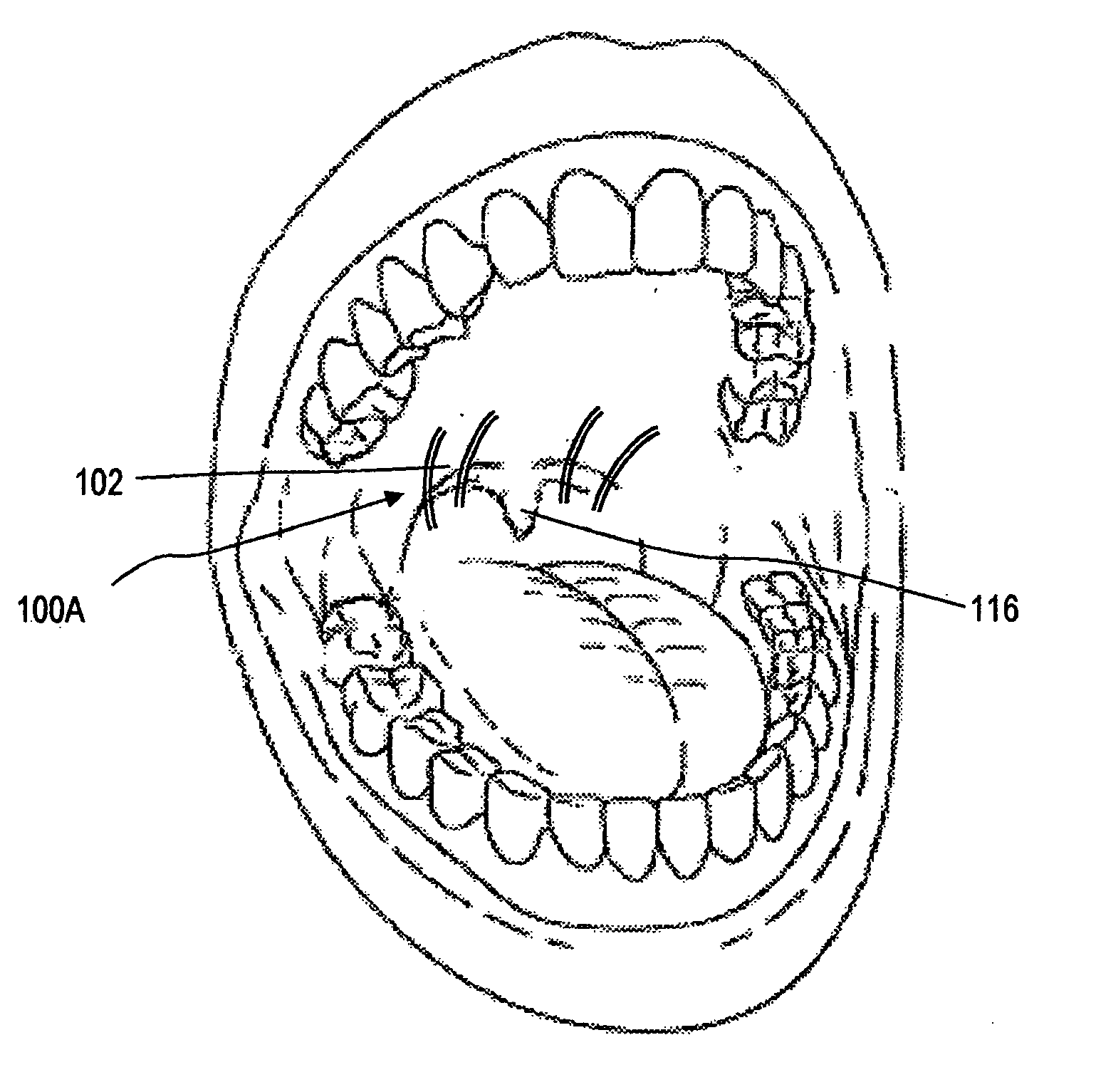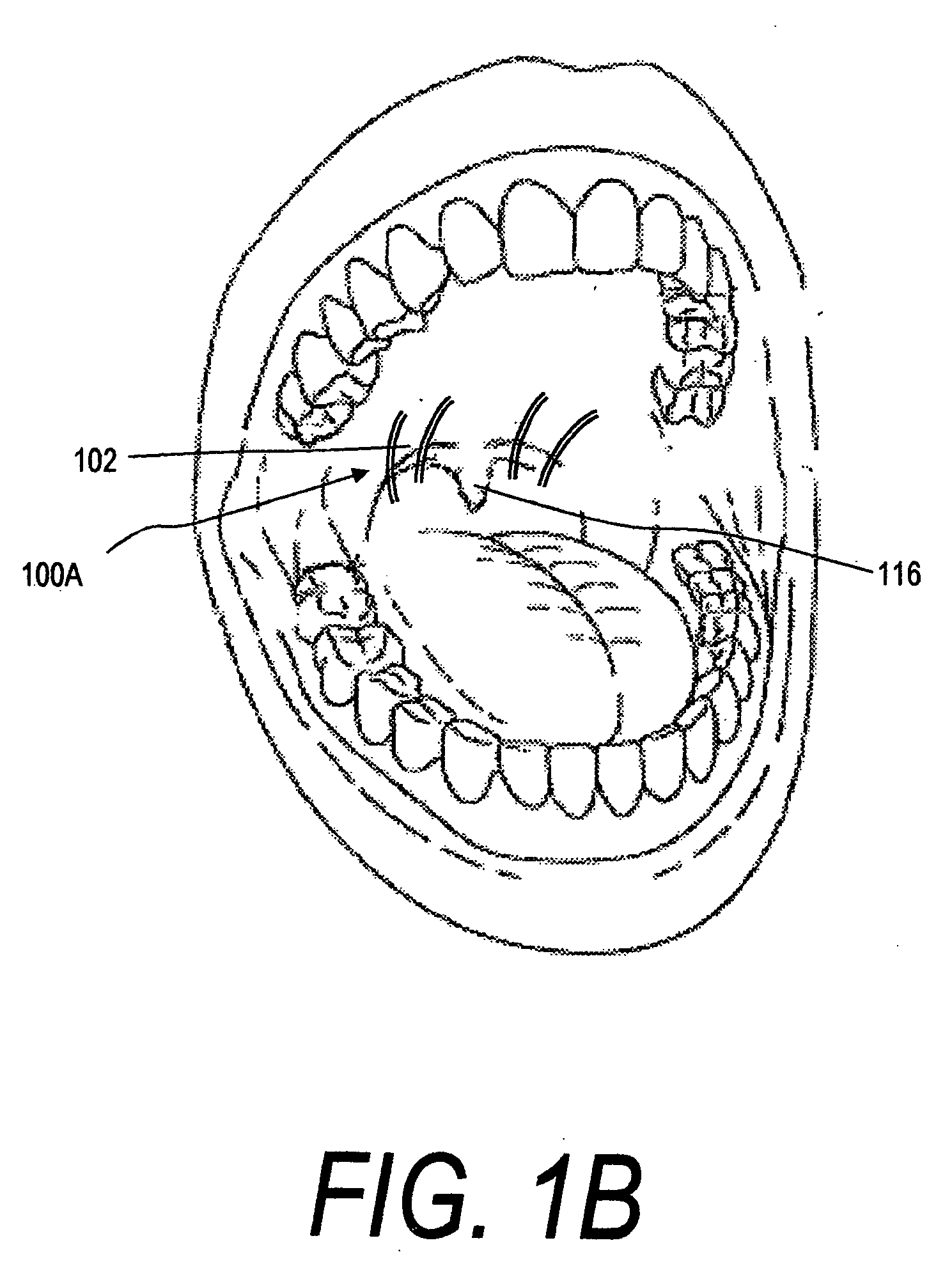Elastomeric magnetic nanocomposite biomedical devices
a biomedical device and magnetic nanotechnology, applied in the field of smart elastomers for biomedical devices, can solve the problems of fragmented nonrestful sleep, straining the patient's lungs and heart, air not flowing freely into and out of the patient's lungs, etc., and achieves the effect of increasing the stiffness of the monolith and low flexural modulus
- Summary
- Abstract
- Description
- Claims
- Application Information
AI Technical Summary
Benefits of technology
Problems solved by technology
Method used
Image
Examples
Embodiment Construction
[0026]FIGS. 1A-1B and 2A-2B illustrate an exemplary embodiment of elastomer magnetic nanocomposite (EMN) and it method of use. The implant bodies 100A are shaped and formed for vibration damping in a patient's upper airway structures to treat obstructed airway syndrome (OAS) or more generally sleep apnea and snoring. The elastomer material comprises a new class of biocompatible smart material with a modulus that can be controlled by an applied magnetic field. The more detailed description of the use of an exemplary implant body 100A in treating a patient's airway tissue is not limiting, and is but one example of a number of uses in a human patient for dynamic stiffening of tissue or for controlling the flexural modulus of a target mammalian body structure.
[0027] In this disclosure, the terms “modulus” and “elastic modulus” are used to describe the flexibility and elastic properties of a composite material, and the combination of the material and engaged tissue, that can be “altered...
PUM
 Login to View More
Login to View More Abstract
Description
Claims
Application Information
 Login to View More
Login to View More - R&D
- Intellectual Property
- Life Sciences
- Materials
- Tech Scout
- Unparalleled Data Quality
- Higher Quality Content
- 60% Fewer Hallucinations
Browse by: Latest US Patents, China's latest patents, Technical Efficacy Thesaurus, Application Domain, Technology Topic, Popular Technical Reports.
© 2025 PatSnap. All rights reserved.Legal|Privacy policy|Modern Slavery Act Transparency Statement|Sitemap|About US| Contact US: help@patsnap.com



